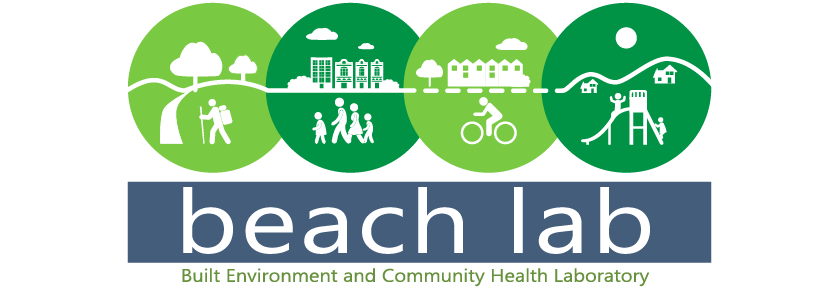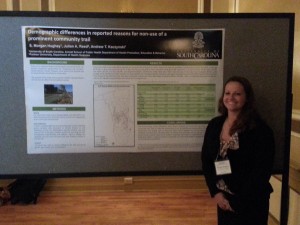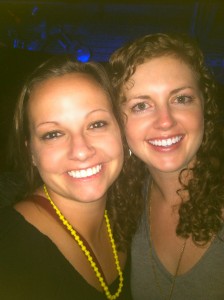From March 16th to March 19th, I had the opportunity to attend the 14th Annual American Academy of Health Behavior (AAHB) Scientific Meeting in Charleston, South Carolina. The theme for this year’s meeting was Environment, Policy, and Behavior Change. Although this is a small conference, the quality of the speakers, discussion, and poster presentations were excellent. The first evening consisted of a welcoming address from the current president, recognition of new members and award recipients, and a social event during the student poster presentation. It was a wonderful time to meet experts in the field of health behavior and talk with other students about their current research efforts.
I presented a poster titled ‘Demographic differences in reported reasons for trail non-use’ which examined results from a random-digit-dial survey that inquired about the use of a prominent community trail in Greenville, SC (led by Dr. Julian Reed at Furman University and co-authored with Dr. Kaczynski). I had several students and faculty members approach my poster with thought-provoking questions, suggestions for future analyses, and ideas for strategies moving forward with the trail research.
My favorite part of the conference, besides the delicious food provided (hey, graduate students appreciate those details!), was the morning presentations that were followed by discussion sessions. Monday’s theme was how policy impacts health behaviors while Tuesday focused on how the environment influences behavior change. Since the mission of the BEACH Laboratory is to better understand how the neighborhoods and communities in which we live, work, and play affect health and well-being, it was informative to hear how researchers operationalize, measure, and use the environment as a central component of their research. One of the most engaging speakers and interesting topics to me was Dr. Keshia Pollack’s (Johns Hopkins Center for Injury Research and Policy) presentation titled ‘Inequities in where we live, work, play, and travel: Implications for injury prevention’. This presentation reminded me of the interests of our research lab as well as a current project, ‘Parks and Environmental Justice’ that I have led for the past 8 months. We are examining if the availability and quality of parks are equitably distributed across communities with various income, race and ethnicity, and education levels in Greenville County, SC. This is just one slice of the physical environment that can play a role in physical activity levels and promoting well-being, but continuing to understand the complexities of how the environment influences health behavior and health outcomes will help us develop innovative strategies to increase active living in our local communities.
I cannot forget to mention the wonderful city where the conference was held – just down the road in Charleston, SC! Despite the predominately rainy and gloomy weather, there is a piece of history on every corner, wonderful shops and restaurants, and of course, the beach is so close. Even better, I was able to spend my time there with a former classmate and roommate from my Master’s program at the University of South Carolina. Overall, I enjoyed my week out of the classroom, learning more about current research in health behavior.
–Morgan Hughey


